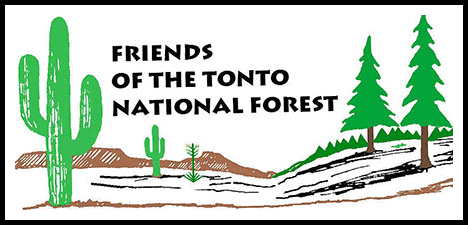What does the Tonto do with all the riparian photographs and why are they important?
Below are some statements from Tonto National Forest Resource Managers.
“The South Zone (Cave Creek, Globe and Mesa Ranger Districts) has used riparian photopoint data collection for several allotment range analyses: Diamond, Millsite, Sunflower, and Copper Creek.
An example of this was the use of photopoints in a section of Sycamore Creek on the Diamond allotment. Several years prior to the range assessment, management within that pasture had changed to dormant season use only, and was proposed to continue under the proposed action. The observed changes in riparian vegetation vertical structure and density, as well as the narrowing of the stream channel served as qualitative data to continue this management scheme.
Conversely, photopoints have been used to show a downward trend in riparian condition possibly due to management, livestock numbers, season of use, the need for additional upland waters, etc. These changes help to guide rangeland management.
Often areas selected for allotment riparian “key areas” during the range analysis process, are also reaches that have photopoint documentation. As such, they show past management effects, and along with quantitative monitoring will cature effects of updated management actions to determine if movement toward desired conditions is occurring.
Photopoint monitoring also captures changes made in recreation management such as upland route closures which reduce sedimentation, to physically blocking off-highway vehicle access to, across, and within riparian areas.
Lastly, repeat photography shows improvement and/or declines in riparian habitat which directly affects a multitude of wildlife species.
In a nutshell…the photopoint monitoring MATTERS and is used by multiple disciplines to assist in on-the-ground management.”
Kelly Kessler, South Zone Wildlife Biologist
“The watershed program at the Tonto National Forest uses the riparian photopoints as an essential tool in our monitoring of riparian and stream health. Because we have a very limited staff, the photos volunteers take may be our only chance to “see” the stream in any year. When folks are careful to exactly replicate the photos from previous years, it provides us with an invaluable record of how the system is changing over time and helps us to make decisions about management, restoration, and where to put additional time and effort into monitoring.
In the past year the watershed program has used photopoint data to complete National Environmental Policy Act (NEPA) analysis for range allotments in the Payson area, validate remotely sensed data on riparian areas on the forest for a new forest-wide data layer on current riparian area condition, and evaluate current riparian area condition as part of our watershed condition class assessment for two of our priority watersheds (East Verde Headwaters and Little Green Valley).”
Kelly Mott LaCroix, Forest Hydrologist
“As for range, I like to get the photopoints taken a few years before we have a grazing consultation. As Hydrologist Kelly Mott LaCroix said, it’s important to look at these photos because we have limited staff and it helps us get a visual of what is going on.”
Jamie Wages, Globe and Mesa Ranger District Range Staff
“The way that I use the photopoints is during NEPA. [These photos] tell a story to the public. Recently, when we completed environmental analysis on the Bar X grazing allotment, the photo points supported our effects analysis for watershed and hydrology.
Honestly, I rely on this photo record so much for supporting information for our analyses. It is wonderful what the photopoint volunteers do for us and I always appreciate it.”
